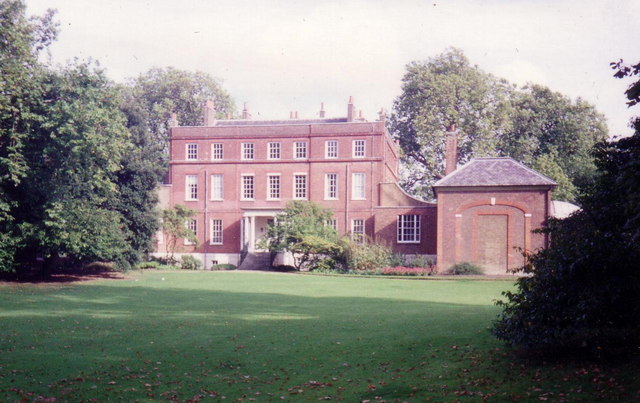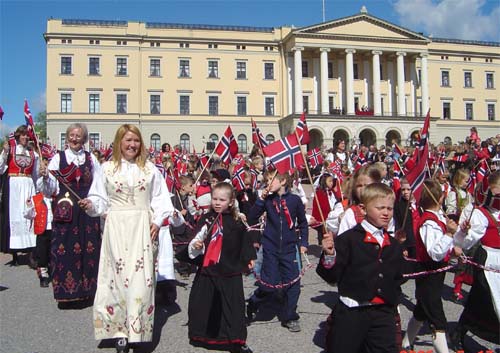by Susan Flantzer
© Unofficial Royalty 2024

Augustus FitzClarence; Credit – By https://www.britishmuseum.org/collection/object/P_1943-0410-637, Public Domain, https://commons.wikimedia.org/w/index.php?curid=133744989
Augustus FitzClarence was born on February 18, 1802, in London, England. He was the ninth of ten children and the fifth of the five sons of King William IV of the United Kingdom and his mistress Dorothea Jordan. Augustus’ paternal grandparents were King George III of the United Kingdom and Charlotte of Mecklenburg-Strelitz. Francis Bland, a stagehand, and his mistress Grace Phillips, an actress, were his maternal grandparents.


Augustus’ parents The Duke of Clarence (later King William IV) and Dorothea Jordan; Credit – Wikipedia
From 1790 until 1811, before he became king, King William IV of the United Kingdom had a long-term relationship with actress Dorothea Jordan. Their relationship resulted in ten children who were given the surname FitzClarence. The surname comes from the Anglo-Norman word Fitz, meaning “son of” and Clarence, from King William IV’s title before he became king, Duke of Clarence.
Dorothea Jordan was born Dorothea Bland was born in County Waterford, Ireland, the daughter of Francis Bland, a stagehand, and his mistress Grace Phillips, an actress. Her mother encouraged Dorothea to enter the theater, and within a few years, she began to draw large crowds for her performances. She left Ireland in 1782 and moved to Leeds, England. It was at this point that she took the name Jordan. She performed for three years with the York Company, before being lured away in 1785 to move to the Royal Theatre, Drury Lane in London. By then, Dorothea was becoming a very popular performer and could be counted on to bring large crowds every night. It was at Drury Lane that her life would come to the attention of The Duke of Clarence several years later.
In 1790, Dorothea was first noticed by The Duke of Clarence (later King William IV) while performing at Drury Lane. They quickly began an affair that would last for the next 21 years. Dorothea moved in with the Duke at his home, Clarence Lodge in Roehampton, London, England and later they moved to Bushy House in Bushy Park in Richmond upon Thames, London, England.

Bushy House; By Stephen Williams, CC BY-SA 2.0, https://commons.wikimedia.org/w/index.php?curid=12574949
In 1797, King George III of the United Kingdom appointed his third son William, then Duke of Clarence, the ranger of Bushy Park. The position came with the residence Bushy House in Bushy Park. William and Dorothea lived there with their ten children until their relationship ended in 1811. William continued living there with his children and later with his wife Adelaide Saxe-Meinigen after they married in 1818.
The children of King William IV and Dorothea Jordan had an elder half-brother, William Henry Courtney, born around 1788 to an unknown mother, and named after his father whose given names were William Henry. Dorothea Jordan cared for William Henry, and she was fond of him and he was fond of her. William Henry served in the Royal Navy from 1803 until 1807 when his ship HMS Blenheim was lost in a gale off Madagascar. Despite an extensive search, no trace of the ship was ever found. 590 men were lost aboard HMS Blenheim, including King William IV’s eldest illegitimate son nineteen-year-old William Henry Courtney.
Nine of the ten children of King William IV and Dorothea Jordan were named after nine of William’s fourteen siblings. That one child was named Henry, William IV’s middle name.
Augustus’ nine siblings:
- George FitzClarence, 1st Earl of Munster (1794 – 1842), married Lady Mary Wyndham, had issue
- Henry FitzClarence (1795 – 1817), unmarried
- Sophia FitzClarence (1795 – 1837), married Philip Sidney, 1st Baron De L’Isle and Dudley, had issue
- Mary FitzClarence (1798 – 1864), married General Charles Richard Fox, no issue
- Frederick FitzClarence (1799 – 1854), married Lady Augusta Boyle, had issue
- Elizabeth FitzClarence (1801 – 1856), married William Hay, 18th Earl of Erroll, had issue, King Edward VII’s granddaughters Princess Alexandra, 2nd Duchess of Fife and Princess Maud, Countess of Southesk and British Prime Minister David Cameron descend from this marriage
- Adolphus FitzClarence (1802 – 1856), unmarried
- Augusta FitzClarence (1803 – 1865), married (1) The Honorable John Kennedy-Erskine, had issue; married (2) Admiral Lord Frederick Hallyburton, no issue
- Amelia FitzClarence (1807 – 1858), married Lucius Bentinck Cary, 10th Viscount Falkland, had issue
William and Dorothea’s children married into the British aristocracy and their many descendants include some notable people including sisters Princess Alexandra, Duchess of Fife and Princess Maud, Countess of Southesk (granddaughters of King Edward VII and daughters of Princess Louise, Princess Royal and Alexander Duff, 1st Duke of Fife, a descendant of Dorothea Jordan and King William IV), Duff Cooper, 1st Viscount Norwich (British diplomat, Cabinet member, author), John Crichton-Stuart, 7th Marquess of Bute (also known as Johnny Dumfries, racing driver), and David Cameron, Prime Minister of the United Kingdom.
By 1811, William was pressured by his family to find a suitable wife. At the time he was fourth in line for the throne following his elder brother The Prince of Wales, the future King George IV, George’s only child Princess Charlotte of Wales, and George’s next oldest brother who was childless Prince Frederick, Duke of York. William gave in to the pressure and ended his relationship with Dorothea but ensured she was well provided for. William became closer to the throne when his niece Princess Charlotte died in 1817 giving birth to a stillborn son. When King George IV died in 1830, William succeeded to the throne. Although William had ten children with Dorothea Jordan, his marriage with Adelaide of Saxe-Meiningen produced no surviving children. King William IV was succeeded by his niece Queen Victoria. Queen Victoria had relationships with her first cousins, King William IV’s illegitimate children. They are mentioned in Queen Victoria’s diaries when visiting Windsor Castle.
Augustus and his siblings had little contact with their mother Dorothea Jordan after 1811 when their father ended his relationship with her. After losing much of her savings when her daughter Augusta and her husband ran up large debts in her name, Dorothea’s health quickly began to decline. Virtually penniless, Dorothea Jordan died in Saint-Cloud, France on July 5, 1816, at the age of 54. She is buried in the local cemetery in Saint-Cloud.
Augustus’ father was determined he serve in the Royal Navy. In 1818, when he was nearly thirteen years old, Augustus joined the crew of the frigate HMS Spartan as a volunteer first class. That same year, Augustus’ father wrote to Vice-Admiral Sir Thomas Francis Fremantle, 1st Baron Fremantle requesting that he take on his son. Augustus joined the HMS Rochfort as a Midshipman in 1818. However, by 1821, Adolphus’ naval career ended.
In 1824, Augustus began his studies at Brasenose College, Oxford. Two years later, he transferred to Trinity College, Cambridge. He received an LL.B (undergraduate law degree) in 1832 and an LL.D (doctorate level law degree) in 1835.

Mapledurham Church where Augustus served as Vicar for twenty-five years; Credit – By Chris Wood, CC BY-SA 4.0, https://commons.wikimedia.org/w/index.php?curid=2024448
Augustus was ordained a priest in the Church of England, although it seems he had little training as a clergyman. In 1829, 24-year-old Augustus became Vicar of St. Margaret’s Church in Mapledurham, Oxfordshire, England where he served until he died in 1854. In 1830, Augustus was appointed Chaplain in Ordinary to his father, now King William IV, and in 1831, he was appointed Chaplain to his father’s wife Queen Adelaide. He also served as Chaplain to his first cousin Queen Victoria from 1840 – 1852.
On January 2, 1845, Augustus married Sarah Elizabeth Catharine Gordon (1827 – 1901), a daughter of Major Lord Henry Gordon, a younger son of George Gordon, 9th Marquess of Huntly.
Augustus and Sarah had six children:
- Dorothea FitzClarence (1845 – 1870), married Thomas Goff, had three children
- Eva FitzClarence (1847 – 1918), twin of Beatrice, unmarried
- Beatrice FitzClarence (1847 – 1909), twin of Eva, unmarried
- Augustus FitzClarence (1849 – 1861), died in childhood
- Henry FitzClarence (1853 – 1930), married Mary Isabel Templer Parsons, had two children
- Mary FitzClarence (1854 – 1858), died in childhood

Churchyard at St. Margaret’s Church, Mapledurham, Oxfordshire, England where Augustus is buried; Credit – Oxford Historic Churches Trust
Augustus died in Mapledurham, Oxfordshire, England on June 14, 1854, aged 49. He is buried in the churchyard at St. Margaret’s Church, Mapledurham, Oxfordshire, England. At the time of his death, Augustus’ wife Sarah was pregnant with their last child Mary, born three months after her father’s death. Sarah survived her husband by forty-seven years, dying on March 23, 1901, aged 74.
This article is the intellectual property of Unofficial Royalty and is NOT TO BE COPIED, EDITED, OR POSTED IN ANY FORM ON ANOTHER WEBSITE under any circumstances. It is permissible to use a link that directs to Unofficial Royalty.
Works Cited
- Beauclerk-Dewar, Peter & Powell, Roger. (2006). Right Royal Bastards – The Fruits of Passion. Burke’s Peerage & Gentry LLC.
- Flantzer, Susan. (2015). King William IV of the United Kingdom. Unofficial Royalty. https://www.unofficialroyalty.com/king-william-iv-of-the-united-kingdom/
- Mehl, Scott. (2020). Dorothea Jordan, Mistress of King William IV of the United Kingdom.
- Rev. Lord Augustus FitzClarence. (2023). Geni_family_tree. https://www.geni.com/people/Rev-Lord-Augustus-FitzClarence/6000000003273999244
- Unofficial Royalty. https://www.unofficialroyalty.com/dorothea-jordan-mistress-of-king-william-iv-of-the-united-kingdom/
- Weir, Alison. (2008). Britain’s Royal Families – The Complete Genealogy. Vintage Books.
- Wikipedia Contributors. (2024). Lord Augustus FitzClarence. Wikipedia; Wikimedia Foundation.










